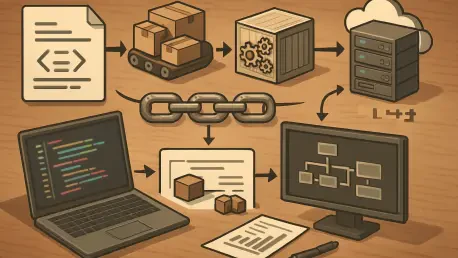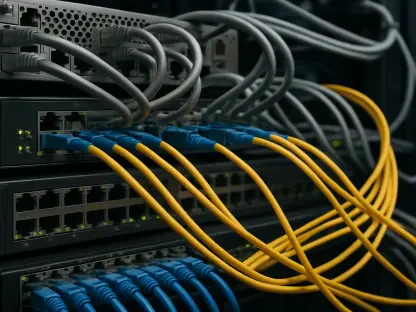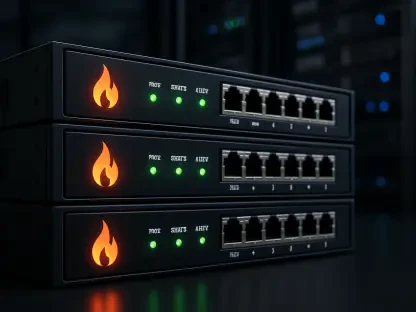In the dynamic digital landscape of 2025, the software supply chain has emerged as a critical battleground for cybersecurity, with businesses facing unprecedented risks from sophisticated attacks that exploit vulnerabilities in open-source software, third-party code, and cloud-native applications. As organizations across industries rely on complex development ecosystems to drive innovation, the threat of supply chain breaches—ranging from dependency hijacking to malicious code insertion—has escalated dramatically, making robust security solutions an absolute necessity. This year stands as a defining moment, with pioneering companies rising to the challenge by offering cutting-edge tools to protect the software development lifecycle (SDLC) from emerging dangers. These leaders are not merely responding to threats but are reshaping the industry with proactive strategies, real-time monitoring, and AI-driven insights that empower enterprises, developers, and security professionals alike. From startups to global giants, the frontrunners in supply chain intelligence security are setting benchmarks that redefine how businesses safeguard their digital assets. This exploration delves into the top players, their innovative approaches, and the unique strengths they bring to a field that is vital for operational resilience. Understanding who dominates this space is essential for any organization aiming to fortify its defenses against an ever-evolving threat landscape, ensuring both compliance and confidence in a hyper-connected world.
The Escalating Challenge of Supply Chain Threats
The software supply chain has become a prime target for cybercriminals, with the frequency and severity of attacks reaching new heights in 2025. Modern development environments, heavily reliant on open-source components and cloud-based architectures, present numerous entry points for threats such as data breaches, software vulnerabilities, and dependency exploits. These risks are amplified by the rapid pace of DevOps and continuous integration/continuous deployment (CI/CD) practices, which, while boosting efficiency, often outpace traditional security measures. Leading companies in supply chain security are stepping up with comprehensive solutions that address these challenges head-on, offering tools that provide end-to-end visibility and protection across complex ecosystems. Their focus is on enabling businesses to maintain operational integrity without sacrificing speed or innovation, a balance that is critical in today’s competitive markets.
Beyond the immediate risks, the long-term implications of supply chain attacks are driving a paradigm shift in cybersecurity priorities. A single breach can cascade through an organization’s network, affecting partners, vendors, and customers, resulting in financial losses and reputational damage. The urgency to mitigate these risks has spurred innovation among top security providers, who are delivering real-time monitoring and actionable insights to detect threats as they emerge. This proactive stance is vital in an era where attackers continuously refine their tactics to exploit even the smallest gaps. As the threat landscape evolves, the emphasis on robust, scalable solutions that can adapt to multi-cloud and hybrid environments underscores the critical role these companies play in safeguarding digital infrastructure.
Masters of Open-Source Protection
A cornerstone of supply chain security lies in addressing the vulnerabilities inherent in open-source software, a fundamental element of modern development yet a frequent source of exploits. Companies like Sonatype and Snyk are at the forefront, offering sophisticated software composition analysis (SCA) tools that scan dependencies for known vulnerabilities and outdated packages. These platforms empower organizations to maintain control over sprawling codebases by identifying risks early in the development process, ensuring that potentially harmful components are addressed before they can be exploited. Their solutions are tailored to the needs of developers and enterprises alike, providing user-friendly interfaces alongside deep technical insights that make open-source security accessible without compromising on depth or accuracy.
Additionally, firms such as Synopsys and JFrog are making significant strides with enterprise-grade tools that focus on governance and binary-level security for open-source components. Synopsys’ Black Duck platform, for instance, delivers detailed risk assessments and compliance features ideal for regulated industries, while JFrog’s Artifactory and Xray ensure end-to-end visibility into software artifacts. Meanwhile, Socket introduces a novel approach with behavioral analysis, detecting malware and suspicious activities in open-source packages that might evade traditional scans. This diversity in strategy highlights how specialized tools are evolving to tackle specific risks, reinforcing the importance of robust open-source protection as reliance on public libraries continues to grow. These companies collectively set a high standard for securing the foundational elements of software development in 2025.
Seamless Security in Development Pipelines
Embedding security directly into the development workflow represents a transformative approach, and leaders like GitLab and Snyk are excelling in this “shift-left” methodology. Their platforms integrate effortlessly with CI/CD pipelines and source code management systems, enabling vulnerability detection at the earliest stages of coding without hindering developer productivity. This integration ensures that security becomes a natural part of the software development lifecycle rather than an afterthought, reducing the likelihood of issues reaching production environments. By automating scans and providing actionable remediation suggestions, these tools strike a critical balance between maintaining development speed and enforcing stringent security standards, a necessity in today’s fast-moving tech landscape.
Complementing this trend, companies such as JFrog and ThreatWorx are also prioritizing seamless integration within existing developer environments to enhance supply chain security. JFrog’s solutions focus on securing software artifacts throughout the build process, while ThreatWorx offers real-time monitoring that aligns with DevOps practices. This focus on workflow compatibility minimizes friction, allowing technical teams to concentrate on innovation rather than wrestling with cumbersome security protocols. The broader adoption of DevSecOps principles across industries further underscores the value of these integrations, as businesses recognize that embedding security early leads to more resilient software. In 2025, the ability to merge protection with productivity is proving to be a defining feature of leading supply chain security providers.
Harnessing AI for Predictive Defense
Artificial intelligence is revolutionizing the approach to supply chain security, with innovators like Sonatype and ThreatWorx leveraging AI to deliver predictive threat management and risk prioritization. These advanced tools analyze vast datasets to identify potential vulnerabilities before they are exploited, automating remediation processes to save time and resources. By forecasting attack vectors and prioritizing high-impact risks, such platforms enable organizations to shift from a reactive posture to a proactive defense strategy. This capability is particularly crucial as cybercriminals employ increasingly sophisticated tactics, making traditional, after-the-fact responses insufficient for maintaining robust security in dynamic environments.
BlueVoyant also stands out in this domain by applying predictive analytics to third-party risk management, offering insights that anticipate vulnerabilities stemming from vendor relationships. Combining global threat intelligence with real-time monitoring, these AI-driven solutions provide a comprehensive view of potential dangers across the supply chain. The tangible impact is a significant reduction in exposure to breaches, as businesses can address weaknesses before they become critical. Far from being a mere trend, AI has become a practical necessity in reshaping threat management strategies. In 2025, the ability to foresee and neutralize risks ahead of time distinguishes these leading companies, setting a new benchmark for intelligence-led cybersecurity in the supply chain arena.
Navigating Compliance and Governance Demands
Adhering to regulatory standards and internal policies remains a pressing concern for many industries, and companies like Synopsys and Imperva are delivering powerful tools to automate compliance within supply chain security frameworks. Synopsys offers detailed risk insights through its Black Duck solution, catering to sectors like finance and healthcare where regulatory scrutiny is intense, while Imperva integrates supply chain monitoring with broader application and data protection for holistic governance. These platforms simplify the complex task of aligning with industry mandates by providing automated reporting and audit trails, ensuring organizations can demonstrate accountability without diverting excessive resources to manual processes.
Similarly, BlueVoyant and Data Theorem address compliance needs with specialized solutions tailored to third-party risk and API security, respectively. BlueVoyant’s managed services focus on continuous monitoring of vendor ecosystems, helping enterprises meet stringent standards, while Data Theorem ensures compliance for businesses with microservices-heavy architectures. These tools not only mitigate the risk of penalties but also foster trust with stakeholders by showcasing a commitment to robust governance. As data protection regulations grow more rigorous in 2025, the importance of such compliance-focused offerings cannot be overstated. They provide a critical layer of assurance, enabling organizations to navigate legal and ethical obligations while maintaining focus on core business objectives across their supply chains.
Shaping the Future of Secure Supply Chains
Reflecting on the strides made by leading companies in supply chain security, it’s evident that their efforts in 2025 redefined how businesses protected their digital ecosystems against relentless cyber threats. Innovators like Sonatype, Snyk, Synopsys, JFrog, GitLab, BlueVoyant, Socket, Data Theorem, ThreatWorx, and Imperva demonstrated unparalleled commitment through diverse solutions spanning open-source protection, AI-driven analytics, and compliance automation. Their work addressed the intricate challenges of modern software development, setting a foundation for resilience that countless organizations relied upon to safeguard operations.
Looking ahead, the focus must shift toward continuous adaptation and investment in these advanced tools to stay abreast of evolving risks. Businesses should prioritize partnerships with these industry leaders, tailoring solutions to specific needs—whether enhancing developer workflows or fortifying third-party defenses. Collaborative efforts between enterprises and security providers will be essential to anticipate future threats, leveraging global intelligence and scalable platforms. By embedding security as a core principle rather than a secondary concern, organizations can ensure sustained growth and trust in an increasingly interconnected world, building on the groundbreaking advancements these companies championed.









